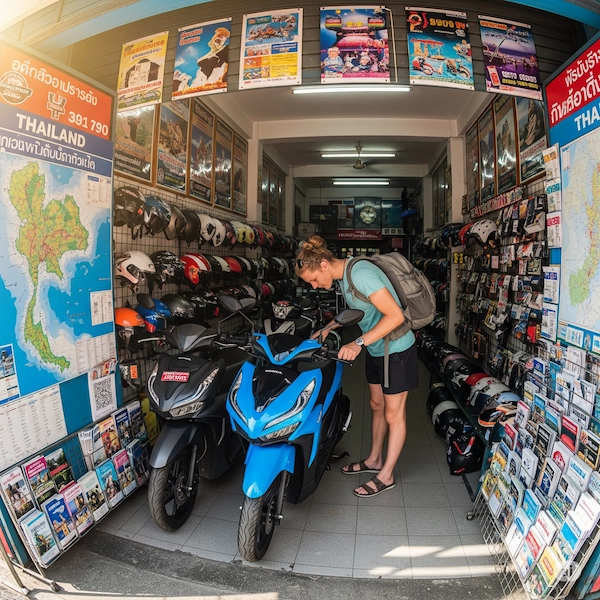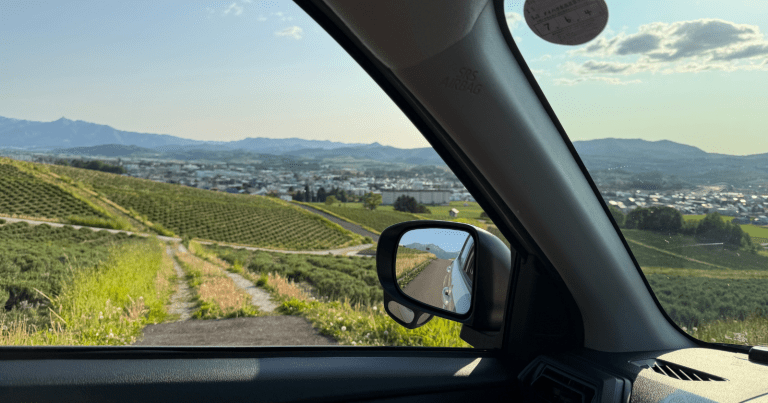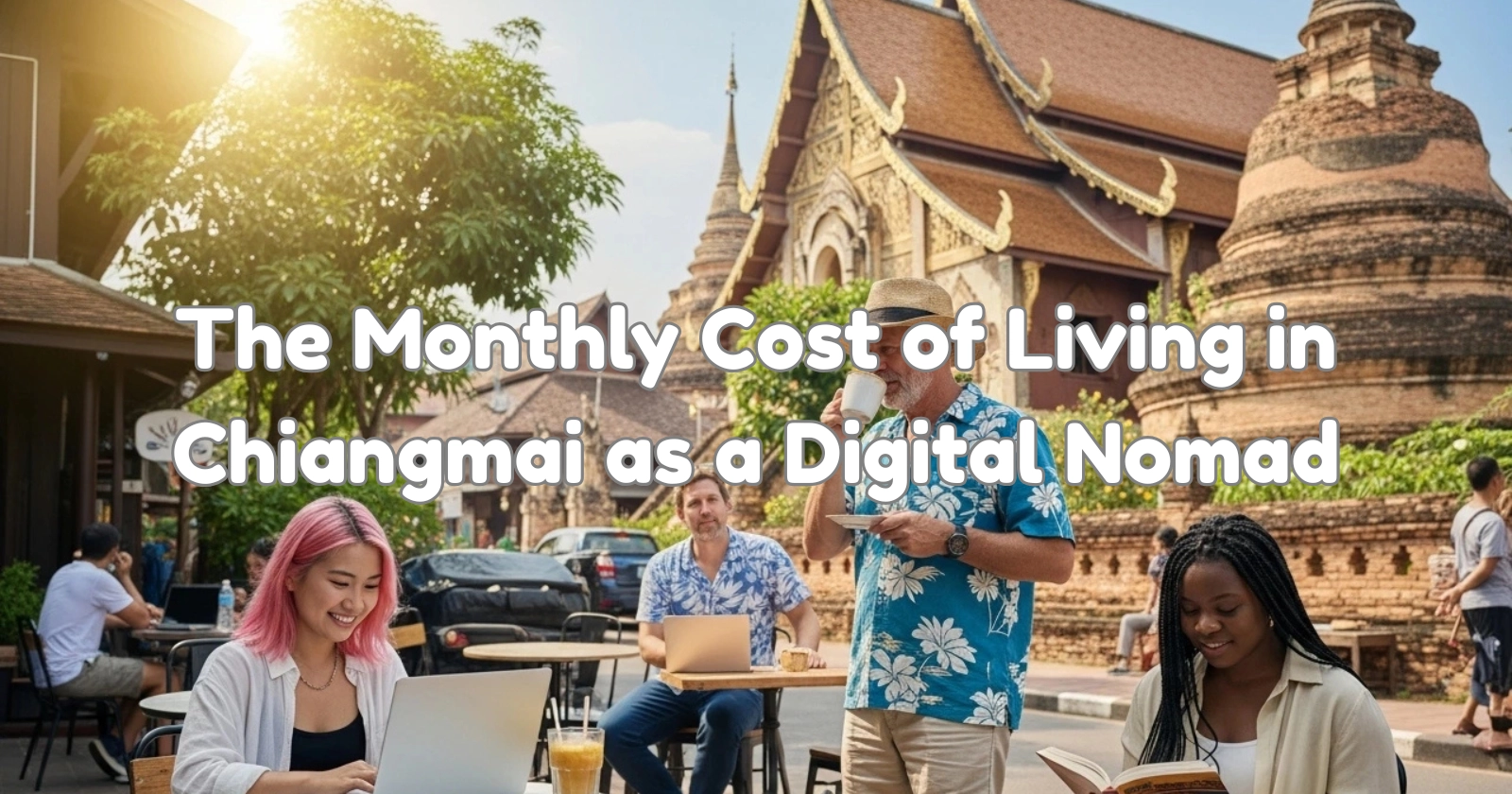
As a Filipina who traded the Philippines for the serene, misty mountains of Northern Thailand, I’ve had the privilege of calling Chiang Mai my home for quite some time now. This city, often hailed as a digital nomad mecca, continues to draw remote workers from across the globe. But as we look towards 2025, a common question arises among aspiring and seasoned nomads alike: Is Chiang Mai still a digital nomad paradise, especially when it comes to the crucial aspect of managing your monthly budget? The allure of cheap living and a vibrant community is strong, but the realities of global inflation and changing local dynamics demand a fresh, honest look at the financial landscape.
This article aims to provide a highly practical and actionable breakdown of the typical Chiang Mai Digital Nomad Costs 2025. We’ll dive deep into specific expenditures, from your roof over your head to your daily coffee fix, offering concrete data and realistic perspectives. My goal is to demystify the financial aspects, empowering you to make informed decisions about whether this charming Thai city aligns with your remote work lifestyle and budget expectations. You’ll gain a clear understanding of what it genuinely takes to thrive here financially, balancing the city’s undeniable attractions with the practicalities of everyday living.
The Core Pillars: Accommodation, Food, and Connectivity
Accommodation
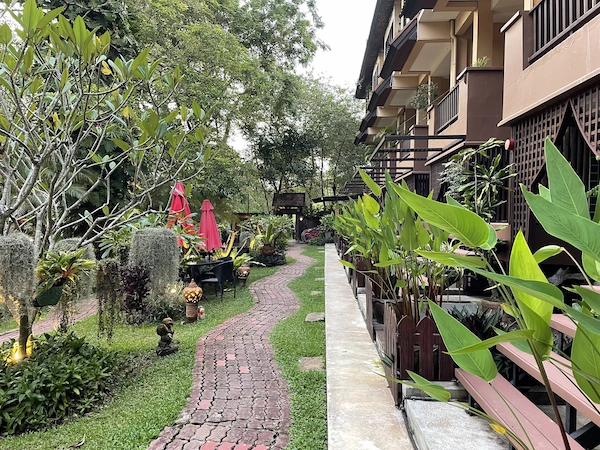 When you first arrive in Chiang Mai, one of the most immediate and significant decisions you’ll face is finding a place to stay. This is often the largest component of your monthly budget, and its cost can vary wildly depending on your preferred location and lifestyle. For instance, I currently reside in a comfortable, modern studio condo in the Changklan area, paying a very reasonable 8,000 Thai Baht (THB) per month. Changklan offers a fantastic balance: it’s central enough to be convenient, close to markets and local eateries, but away from the tourist-heavy bustle, providing a more authentic local experience.
When you first arrive in Chiang Mai, one of the most immediate and significant decisions you’ll face is finding a place to stay. This is often the largest component of your monthly budget, and its cost can vary wildly depending on your preferred location and lifestyle. For instance, I currently reside in a comfortable, modern studio condo in the Changklan area, paying a very reasonable 8,000 Thai Baht (THB) per month. Changklan offers a fantastic balance: it’s central enough to be convenient, close to markets and local eateries, but away from the tourist-heavy bustle, providing a more authentic local experience.
For those considering other popular areas, the costs will differ. Nimman, for example, is often considered the trendiest and most modern part of Chiang Mai, teeming with cafes, co-working spaces, and boutique shops. Rent here typically starts higher, often ranging from 12,000 THB to 25,000 THB for a similar studio or one-bedroom condo, reflecting its popularity and amenities.
The Old City Square, while charming and historically rich, might see older, less modern apartments or guesthouses starting from 7,000 THB, but nicer, renovated options could easily go up to 15,000 THB. Santitham, a quieter, more residential neighborhood popular with local students and longer-term expats, offers more budget-friendly options, with studios potentially found for 6,000 THB to 10,000 THB. Finding suitable accommodation often involves exploring local Facebook groups (which are goldmines for direct rentals), engaging with local agents, or using platforms like Airbnb for short-term stays to scout out areas before committing long-term. Always inspect the unit thoroughly and clarify what utilities are included in the rent.
Here’s a quick breakdown of the rental costs in some areas of Chiang Mai:
- Changklan: 8,000 THB for a modern studio
- Nimman (Trendy Area): 12,000 – 25,000 THB for a studio or one-bedroom condo
- Old City Square: Starting from 7,000 THB for older units, up to 15,000 THB for renovated options
- Santitham (Budget-friendly): 6,000 – 10,000 THB for a studio
Utilities
Beyond rent, utilities are your next significant fixed cost. Electricity, especially if you rely on air conditioning, can add a substantial amount to your bill. During the hotter months (March to May), my electricity bill can easily jump from 500 THB to 1,500 THB or even 2,000 THB if I use the AC extensively. Water bills are negligible, usually under 100 THB per month. Managing your AC usage wisely – using fans, opening windows during cooler times, and choosing shaded rooms – can make a real difference to your overall expenses.
During the hotter months (March to May), my electricity bill can easily jump from 500 THB to 1,500 THB or even 2,000 THB if I use the AC extensively. Water bills are negligible, usually under 100 THB per month. Managing your AC usage wisely – using fans, opening windows during cooler times, and choosing shaded rooms – can make a real difference to your overall expenses.
Internet
Internet connectivity is paramount for any digital nomad, and thankfully, Chiang Mai offers reliable and affordable options. While many condos include basic Wi-Fi, I opt for a pocket Wi-Fi device, which gives me flexibility to work from anywhere. I pay 550 THB for 30 days of unlimited data, which is more than sufficient for my needs. For those preferring a fixed home connection, fiber optic internet packages are readily available from providers like AIS, True, or TOT, offering speeds of 500 Mbps to 1 Gbps for typically 600 THB to 1,000 THB per month. Having robust internet infrastructure is one of Chiang Mai’s enduring strengths for remote workers.
Daily Sustenance, Commutes, and Social Life: What to Expect
Food and Drinks
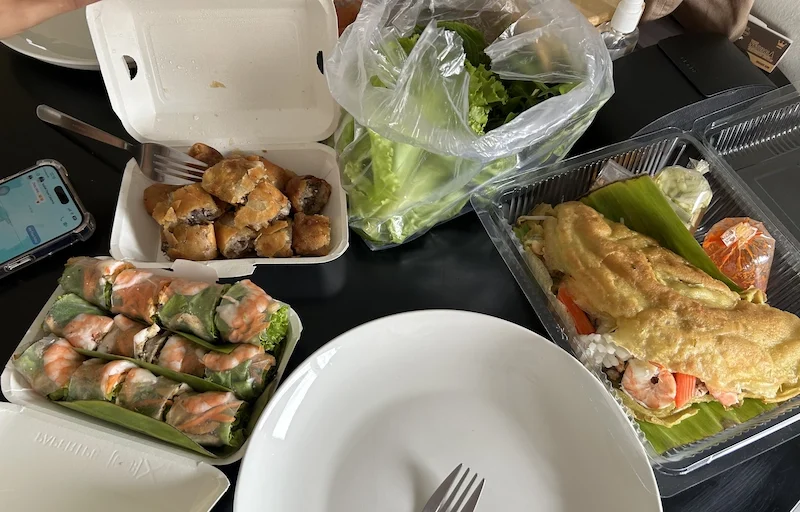
Food in Chiang Mai is not just sustenance; it’s an experience. As someone who loves immersing herself in local culture, I find joy in navigating the vibrant culinary scene. My personal grocery budget is around 1,000 THB per week, which allows me to stock up on fresh produce, some staples, and occasional treats. However, the real magic of eating affordably in Chiang Mai lies in its ubiquitous night markets and street food stalls. You can easily find a delicious, filling meal for 40-60 THB.
Eating out for every meal is still very budget-friendly here compared to Western countries. A simple local lunch can be 50-80 THB, while a sit-down dinner might range from 80-150 THB. If you crave Western food, expect to pay more, perhaps 150-300 THB per dish. By prioritizing Thailand street food and local markets, you can significantly stretch your food budget.
Transportation
Transport is another key area of monthly costs. I confess, as someone who doesn’t drive, I rely heavily on Grab (Thailand’s equivalent of Uber) for my commutes. A typical round trip on a Grab bike within the city costs me between 100-150 THB, depending on the distance and time of day. While convenient, this can add up if you’re constantly on the move. Many nomads opt for scooter rentals, which offer more freedom and can be cheaper in the long run. Monthly scooter rentals typically range from 2,000 THB to 4,000 THB, plus fuel costs. However, it’s crucial to understand the risks and ensure you have proper insurance and a valid international driver’s permit. Before you consider renting, I strongly recommend reading up on scooter rental safety in Thailand to avoid potential pitfalls.
Going Out
For many digital nomads, coffee shops aren’t just places to grab a drink; they’re essential co-working spaces. I find myself working from a coffee shop 3 to 4 times a week. The cost per drink usually ranges from 80 THB for a basic Americano to 150 THB for a specialty latte. Chiang Mai boasts an incredible coffee scene, with countless cafes offering strong Wi-Fi and comfortable environments, making this an integrated part of the work-life balance for many. If you prefer dedicated co-working spaces, daily passes might be 150-300 THB, with monthly memberships typically ranging from 2,000 THB to 4,000 THB.
Socializing and leisure activities are vital for well-being. A night out can be as budget-friendly or as extravagant as you make it. A local beer at a bar or restaurant typically costs 100-150 THB. Cocktails might range from 180-350 THB, depending on the venue. Exploring local markets, visiting temples, or enjoying nature (like waterfalls or national parks) often incurs minimal costs beyond transport. For fitness, gym memberships vary widely. I prefer day passes for convenience and flexibility, paying 60 THB per session, about four times a week. Monthly gym memberships can range from 800 THB for basic local gyms to 2,500 THB or more for well-equipped fitness centers with classes.
Estimated Monthly Cost Breakdown (in THB)
1. Budget-Friendly Estimate:
-
Rent: 6,000 (Santitham studio)
-
Utilities: 600 (low AC use)
-
Internet: 550 (pocket Wi-Fi)
-
Food: 4,000 (mostly street food and home cooking)
-
Transport: 2,500 (scooter rental + fuel)
-
Lifestyle: 1,500 (occasional coffee, basic gym, minimal nights out)
-
Low-End Total: ~15,150 THB
2. Comfortable/High-End Estimate:
-
Rent: 25,000 (trendy Nimman condo)
-
Utilities: 2,100 (heavy AC use)
-
Internet: 1,000 (fiber-optic)
-
Food: 10,000 (mix of local, Western food, and frequent dining out)
-
Transport: 4,500 (relying on Grab daily)
-
Lifestyle: 9,000 (co-working space, high-end gym, frequent socializing)
-
High-End Total: ~51,600 THB
Total Sum and USD Conversion
-
Low-End Total: 15,150 THB ≈ $415 USD per month
-
High-End Total: 51,600 THB ≈ $1,415 USD per month
Addressing Realities, Challenges, and Long-Term Considerations
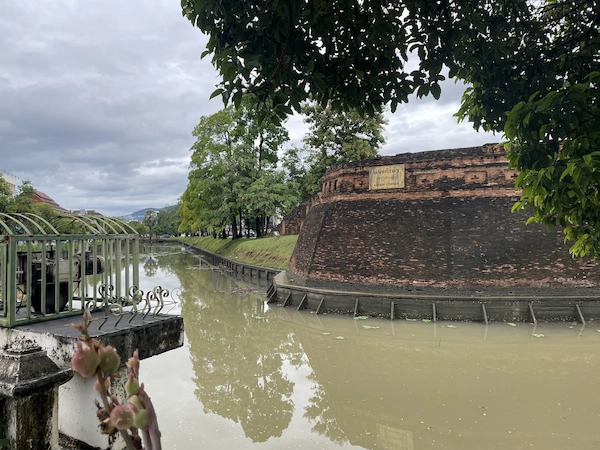
While Chiang Mai remains incredibly affordable, it’s essential to approach the “digital nomad paradise” label with a dose of realism. Costs are generally on an upward trend, influenced by local inflation and increasing demand. While the Bank of Thailand works to stabilize the economy, visitors should be aware that prices for goods and services do not remain static. What was true for living expenses five years ago might not hold precisely true for Chiang Mai living expenses in 2025. It’s about being adaptable and seeking out local options, which almost always offer better value.
I remember my first few weeks in Chiang Mai, thinking I had my food budget locked down perfectly based on what I’d heard from others. Then I realized how much I loved the fresh fruit shakes and local desserts, and my initial 1,000 THB a week for groceries started stretching thin. I quickly learned to seek out the local markets for produce and make quick, simple meals at home, saving the delicious street eats for special treats or when I needed a convenient lunch. This really helped balance my spending without sacrificing the joy of Thai cuisine, proving that small adjustments can make a big difference.
Furthermore, while Chiang Mai is fantastic, it’s good to consider other hubs in Asia. For example, some nomads find Kuala Lumpur to be a highly underrated digital nomad city, offering a different set of opportunities and challenges. Similarly, the realities of remote work in places like Bali present their own unique warnings that are worth researching before committing to a long-term stay. Understanding these comparisons helps contextualize Chiang Mai’s position in the broader Asian nomad landscape.
Final Thoughts
So, is Chiang Mai still a digital nomad paradise for 2025? In terms of monthly costs, it absolutely can be, provided you are intentional with your spending and willing to embrace a local lifestyle. My personal monthly average, combining all the factors discussed – rent, food, transport, internet, coffee, gym, and going out – typically hovers around 15,000 THB to 20,000 THB (approximately $420-$560 USD). This allows for a comfortable, fulfilling life with plenty of local experiences and social interactions, without feeling deprived. Your costs could be lower if you’re a strict budget backpacker, or significantly higher if you seek a more luxurious or Western-centric lifestyle. This range is also significantly lower than what you might spend in many other major digital nomad hubs globally, making it a compelling option for those looking to stretch their budget without sacrificing quality of life.
The key takeaway is that Chiang Mai offers incredible value, but it’s not a static environment. Prices will fluctuate, and regulations may evolve. My final, most practical tip for anyone planning to make Chiang Mai their base is to cultivate flexibility in your budget and be open to living like a local. This not only saves you money but also enriches your experience immeasurably. Embrace the night markets, learn a few Thai phrases, and connect with the vibrant expat and local communities.
See you around!


